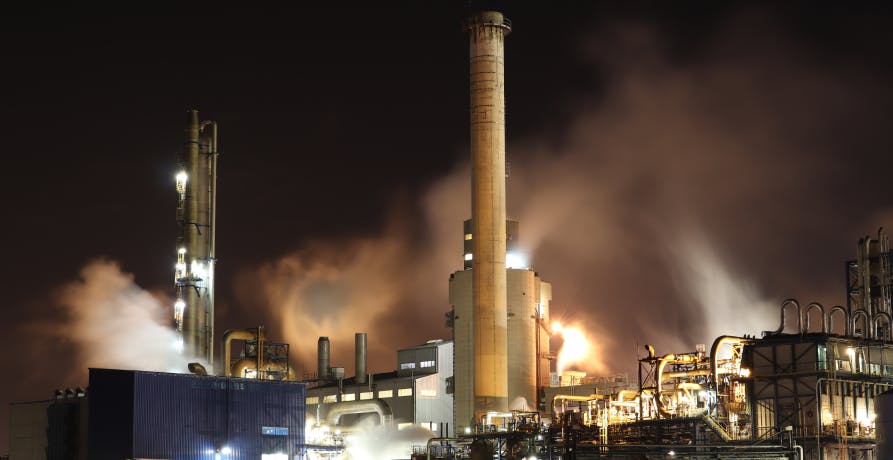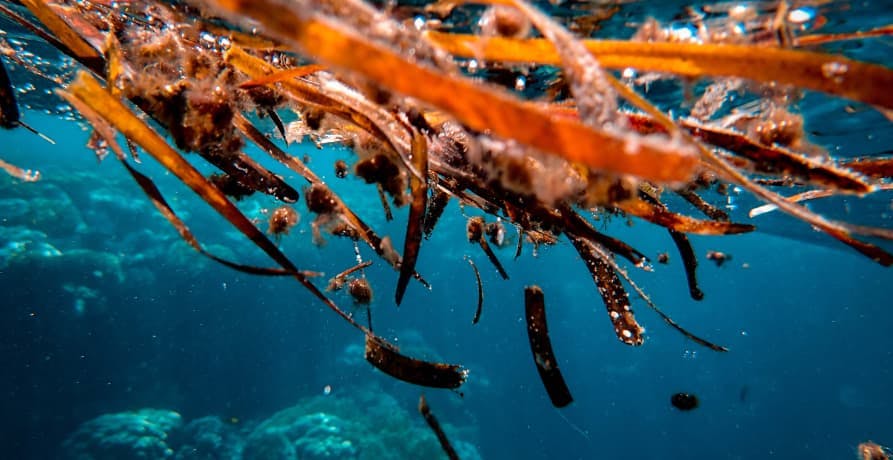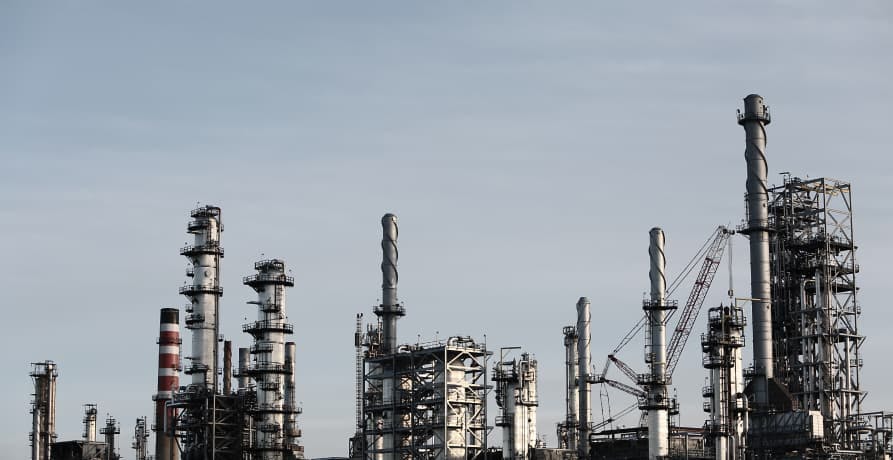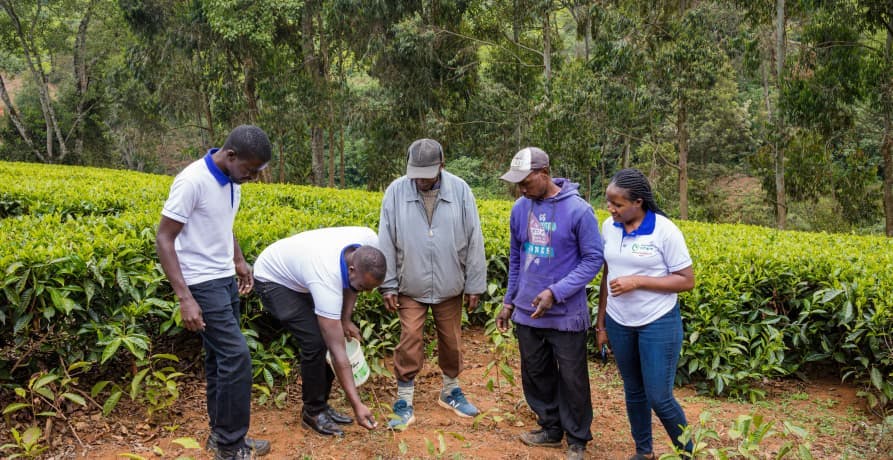
What are the 3 Pillars of Corporate Sustainability?
In this article, we'll explore what the 3 pillars of corporate responsibility are, why they're important, and how businesses can turn them into practical action.
ESG / CSR
Industries



Carbon sinks are crucial components in the fight against climate change. These natural systems, such as oceans, forests, and soils, absorb about half of the excess carbon dioxide (CO2) emissions produced by human activities, significantly mitigating the rise in global temperatures. Unfortunately, human activities are increasingly threatening these vital carbon sinks, potentially turning them into carbon sources if their destruction continues unchecked.
👉 In this article, we will delve into the nature of carbon sinks, their importance, and the growing threats they face.
Natural carbon sinks:

Artificial carbon sinks:

💡 Carbon sinks are essential in maintaining the balance of the carbon cycle and regulating the Earth’s climate. They help offset the billions of tons of CO2 emitted by human activities each year, preventing drastic increases in global temperatures. However, human activities such as deforestation, land-use changes, and pollution are damaging these natural carbon sinks, reducing their capacity to absorb CO2 and potentially turning them into carbon sources.

Carbon is fundamental to life on Earth. As the backbone of organic molecules, carbon atoms are integral to our bodies, our food, and our environment. It is the fourth most abundant element in the universe. On Earth, carbon atoms cycle continuously through a closed system, meaning no carbon is lost to or gained from space. This perpetual movement of carbon atoms within Earth's atmosphere, lithosphere, hydrosphere, and biosphere is known as the carbon cycle.
The carbon cycle involves the continuous movement of carbon within Earth's systems. Understanding how carbon moves through these different reservoirs is essential for comprehending its role in climate regulation and life on Earth.
The table below outlines the key reservoirs of carbon and their functions within the carbon cycle:
| Carbon Reservoir | Description |
|---|---|
| Atmospheric carbon | Carbon exists in the atmosphere primarily as carbon dioxide (CO2). Plants, through photosynthesis, absorb CO2, converting it into organic matter and releasing oxygen. This process is vital for life on Earth, providing the foundation of the food web. |
| Carbon in the biosphere | Plants, animals, and microorganisms all contain carbon. When plants and animals die, their organic matter decomposes, returning carbon to the soil. Microorganisms play a crucial role in breaking down this organic matter, releasing CO2 back into the atmosphere through respiration. |
| Carbon in the oceans | Oceans are significant carbon sinks, absorbing CO2 from the atmosphere. Marine organisms, like phytoplankton, use CO2 for photosynthesis, forming the base of the marine food web. Carbon also gets stored in the ocean’s depths, both in dissolved form and as part of marine sediments. |
| Geological carbon | Over millions of years, carbon can become trapped in fossil fuels - coal, oil, and natural gas - formed from ancient plant and animal matter. Volcanic eruptions and the weathering of rocks also release carbon back into the atmosphere, while sedimentation traps it in geological formations. |
| Human impact | Human activities, such as burning fossil fuels and deforestation, release significant amounts of CO2 into the atmosphere, disrupting the natural carbon cycle. This increase in atmospheric CO2 contributes to global warming and climate change. |
Balancing the cycle: The carbon cycle involves two main processes:
The balance between these sources and sinks maintains the carbon equilibrium. When this balance is disrupted, it leads to increased atmospheric CO2 levels, affecting the global climate.
Maintaining the carbon cycle's balance is crucial for sustaining life and mitigating climate change. Efforts to preserve and enhance natural carbon sinks, reduce carbon emissions, and develop sustainable technologies are essential steps in ensuring a stable and healthy environment for future generations.
The carbon cycle is essential for maintaining the Earth's temperature and ensuring climate stability. However, human activities have significantly disrupted this natural equilibrium.
Global warming, driven by human activities, is the primary catalyst for climate change. Increased levels of global greenhouse gas emissions in the atmosphere lead to more frequent and severe weather events such as flooding, tropical storms, and droughts. Global warming also impairs the ability of natural carbon sinks to absorb CO2:
As these natural systems are compromised, their ability to mitigate climate change diminishes, leading to a feedback loop that exacerbates global warming. Protecting and restoring these carbon sinks is essential to managing and reducing the impacts of climate change.
The Industrial Revolution marked a turning point in human history, leading to technological and societal advancements. However, it also initiated our heavy reliance on fossil fuels like coal, natural gas, and oil. Burning these fossil fuels releases vast amounts of CO2, which is one of the primary drivers of climate change and global warming.
Forests act as significant carbon sinks, absorbing CO2 through photosynthesis. Deforestation, driven by agriculture, logging, and urbanisation, reduces the number of trees available to absorb CO2. Additionally, the conversion of forests into agricultural land releases stored carbon into the atmosphere, further exacerbating the problem.
Industrial farming practices are another harmful human activity that impacts the Earth's soil's ability to capture and store carbon. Not only does agriculture contribute as much as 23% of all greenhouse gas emissions, but it also affects the ability of soil to absorb and store CO2.
Healthy soil is a mix of microbes and carbon. Without these elements, it becomes dry earth, incapable of supporting plant life.
Industrial processes, including cement production and metal refining, release substantial amounts of CO2 and other greenhouse gases. These emissions are a significant factor in the disruption of the carbon cycle.
Improper waste management, particularly in landfills, leads to the decomposition of organic waste, producing methane. Although modern landfills can capture some of this methane for energy, significant amounts still escape into the atmosphere, contributing to the greenhouse effect.
The oceans absorb a large portion of the excess CO2 from the atmosphere, leading to ocean acidification. This process harms marine life, particularly coral reefs, and organisms that rely on calcium carbonate to form their shells and skeletons. Acidification also affects the ocean's ability to absorb CO2, further disrupting the carbon cycle.
All the excess CO2 produced through human activities needs to be accounted for. Here's where it goes:
Absorption by carbon sinks - Around half of the excess CO2 is absorbed by the Earth's carbon sinks, such as forests, oceans, and soils. These sinks play a crucial role in mitigating the impact of human-induced carbon emissions.
Trapped in the atmosphere - The remainder of the excess CO2 stays in the atmosphere. This trapped CO2 is the primary driver of global warming, as it creates a greenhouse effect by trapping heat, which warms the planet and accelerates climate change.
Consequences of rising CO2 levels:
The ocean is the world's largest carbon sink, absorbing about 25% of all CO2 emissions and capturing 90% of the excess heat generated by these emissions. The oceans utilise two primary methods to absorb carbon:
Forests are among our most crucial carbon sinks, absorbing around 30% of the carbon emissions released from burning fossil fuels. They sequester CO2 through photosynthesis, converting it into biomass and storing it in various forms:
Soil is another crucial carbon sink, storing carbon as soil organic matter (SOM), which includes decomposed plant and animal material. Soil can retain carbon for millennia, influenced by factors such as climate, water levels, and vegetation.
The capacity of natural carbon sinks to absorb CO2 has been declining over time, which is a growing concern for scientists. According to research conducted by NASA, in 1959, natural carbon sinks removed about 60% of the CO2 produced by human activities. Today, this number has dropped to around 55%.
This decrease signifies that these natural systems are becoming less effective at mitigating the impact of human-induced carbon emissions. As the efficiency of these sinks declines, more CO2 remains in the atmosphere, accelerating global warming and climate change. The trend underscores the urgent need for enhanced conservation strategies and innovative solutions to bolster the capacity of natural and artificial carbon sinks.

With the declining efficiency of natural carbon sinks, there is a growing interest in whether artificial carbon sinks can provide a viable solution to global warming. But what exactly are artificial carbon sinks, and how do they work?
Artificial carbon sinks rely on technology to capture carbon dioxide directly from the atmosphere or from industrial processes, and then either store or repurpose it. This approach, known as carbon capture, utilization, and storage (CCUS), is becoming increasingly important as natural carbon sinks are under threat and unable to absorb all the excess CO2 being emitted.
Direct Air Capture technology is one of the most promising artificial carbon sink solutions. DAC systems use large fans to pull air from the atmosphere, passing it through chemical filters that extract CO2. This captured CO2 can then be utilized or stored in several ways:
Another method of artificial carbon sequestration is capturing CO2 emissions directly from industrial processes. Industrial waste carbon capture involves collecting CO2 produced as a by-product of industrial activities, such as cement manufacturing or fossil fuel combustion before it is released into the atmosphere. This captured CO2 can also be utilised or stored.
While artificial carbon sinks offer a novel way to increase carbon sequestration and mitigate climate change, the implementation of carbon capture, utilisation, and storage (CCUS) technologies has encountered several significant challenges, preventing the widespread adoption and scalability of these systems.
One of the primary obstacles facing CCUS is the lack of established revenue streams, which results in poor business cases for investors and companies. The high costs associated with capturing and storing CO2, coupled with the absence of robust financial incentives, make it difficult for businesses to justify large-scale investments in these technologies. The economic feasibility of CCUS projects is further hampered by fluctuating market conditions and the lack of a stable carbon pricing mechanism that would make carbon capture more financially attractive.
Many CCUS technologies remain in the developmental or pilot stages, with several technical hurdles yet to be overcome. The processes involved in capturing CO2 directly from the air or industrial sources are complex and energy-intensive, requiring significant advancements to become more efficient and cost-effective. Additionally, long-term carbon storage poses challenges, such as ensuring the integrity of geological storage sites to prevent leaks and monitoring these sites over extended periods.
Insufficient policy support is another critical factor impeding the progress of CCUS. Effective implementation of these technologies requires comprehensive regulatory frameworks that provide clear guidelines and incentives for adoption. Current policies often lack the necessary support structures, such as subsidies, tax incentives, and robust carbon pricing, to promote the large-scale deployment of CCUS. Moreover, the regulatory landscape varies significantly across different regions, creating inconsistencies that further complicate the adoption of these technologies.
The complexities of project coordination and the inadequacy of existing infrastructure also pose significant challenges. CCUS projects require extensive collaboration between various stakeholders, including governments, industries, and research institutions. Coordinating these efforts can be challenging, particularly in regions with less developed industrial and energy infrastructures. Additionally, the infrastructure required for transporting and storing captured CO2, such as pipelines and storage facilities, is often lacking or underdeveloped, impacting the scalability of CCUS projects.
Despite these challenges, there is growing optimism within the CCUS market. The urgent need to address climate change is driving increased investment and innovation in this area. Governments and private sectors are beginning to recognise the potential of CCUS technologies, leading to a surge in funding for research and development. This renewed interest is supporting technological advancements and the upscaling of projects, which could overcome existing barriers and make CCUS a viable solution for carbon management.
In addition to investing in the development of effective artificial carbon sinks, we must also focus on protecting and restoring the Earth's existing natural carbon sinks. Here are some key strategies to enhance the efficiency of these vital systems:
The Earth's forests absorb as much as 2.6 billion tonnes of carbon dioxide each year, but they are increasingly threatened by human activities. To protect this vital carbon sink, we need to reduce forest destruction through sustainable forestry practices that preserve existing forests and support reforestation efforts in areas that have been lost.
The capacity of our oceans to capture and store carbon dioxide is decreasing due to warming ocean temperatures caused by excess atmospheric CO2. Therefore, it is crucial for societies worldwide to take steps to decarbonise and eliminate their reliance on fossil fuels, the most harmful man-made carbon source.
Plastic pollution in our oceans is incredibly harmful to organisms such as plankton and algae, which absorb more carbon than all of our plants and trees combined. Microplastics have been proven to affect their ability to absorb carbon dioxide, making it essential to address plastic pollution.
Sustainable agricultural practices are crucial for preventing the deterioration of soil health and enhancing the ability of Earth's soil to act as a carbon sink.
👉 By adopting these strategies, we can significantly improve the efficiency of natural carbon sinks and enhance our ability to mitigate the impacts of climate change. Protecting and restoring these systems, alongside the development of artificial carbon sinks, is essential for maintaining a balanced carbon cycle and ensuring a sustainable future for our planet.

Carbon sinks are a vital part of the carbon cycle and are crucial when it comes to preventing further rises in our global average temperature and the rapid deterioration of our climate.
However, today's carbon sinks may become tomorrow's carbon sources if we don't do more to protect these vital systems. This is why it's imperative that governments, companies, and individuals across the world take action to reduce our reliance on harmful fossil fuels and transition to a more sustainable way of existence - one that protects our natural carbon sinks and respects the Earth's natural processes.
At Greenly, we can help you assess your company's carbon footprint, and then give you the tools you need to reduce emissions. Our suite of services includes:
Carbon Management: Track Scope 1, 2, and 3 emissions using advanced technology for a complete view of your greenhouse gas footprint.
Custom Action Plans: Develop tailored strategies with our climate experts, focusing on key areas for improvement and implementing effective changes.
Supply Chain Decarbonisation: Engage suppliers and transition to low-carbon options, achieving greater transparency and effectively managing Scope 3 emissions. Sustainable sourcing initiatives build greener partnerships and reduce emissions throughout your supply chain.
Intuitive and Seamless Platform: Our user-friendly platform simplifies the process of calculating and monitoring your carbon footprint. It helps your business manage its environmental impact effortlessly, meet ESG goals, and enhance sustainability.
👉 With Greenly’s help, your business can significantly reduce its environmental impact and achieve lasting sustainability. Contact Greenly today to start leading the way in sustainability and build a greener future for your company.
